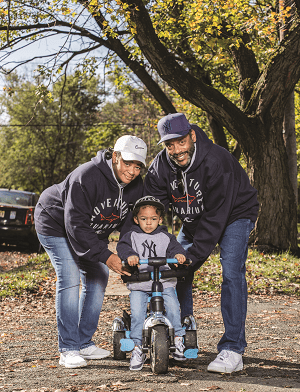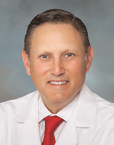"It was a fast recovery. I feel much better."

One day in 2018, Denise Newkirk of Hamilton picked up her 1-year-old granddaughter and felt a sharp, burning pain in both legs.
“I couldn’t move for a week,” recalls the 55-year-old nurse. “I couldn’t twist from right to left or get out of a chair.”
When she became more mobile, she had trouble walking, standing, and lifting. She and her husband, Michael, have an RV, and they are typically on the road for seven months each year. Every 28 days, they move to a new campsite.
“I lift supplies, firewood, and equipment to set up our campsites,” says Denise. As a result of her back pain, the couple was forced to stop traveling.
Regaining Mobility
Denise’s daughter had had spine surgery several years earlier, so Denise made an appointment with her surgeon, Marc J. Levine, MD, Director of Orthopedic Spine Surgery at Robert Wood Johnson University Hospital (RWJUH) Hamilton and Clinical Assistant Professor of Orthopedic Surgery at Rutgers Robert Wood Johnson Medical School.
An X-ray and MRI revealed that Denise had lumbar stenosis, in which the spinal canal narrows, putting pressure on nerves. She also had spondylolisthesis, in which a spinal bone slips forward, causing pain.
Dr. Levine recommended a minimally invasive spinal fusion, in which two or more spinal bones are connected, to stabilize her lower back.
“I had confidence in him because he operated on my daughter,” says Denise, who was reluctant to have the operation. “But he never pressured me to have the surgery. He always said, ‘Let me know when you’re ready.’”

Dr. Levine prescribed physical therapy and pain medication, but Denise didn’t experience much relief. She put off the surgery until October 2018, when she couldn’t cope with the pain any longer.
To improve her chances of a quick recovery, Dr. Levine used a minimally invasive technique to go through Denise’s side rather than the front or back of her body.
“There was no blood loss or damage to her back muscles or spinal canal,” says Dr. Levine. “This surgical approach also reduces the risk of infection.” Denise did well and resumed her usual activities.
Then, in April 2019, Denise was in a car accident and suffered a neck injury, which caused tingling and numbness in both of her arms. She saw Dr. Levine, who recommended surgery, which included fusing two spinal segments in her neck.
“It was a fast recovery,” says Denise, who wore a neck brace afterward but didn’t need physical therapy. “I feel much better. The tingling in my arms has stopped, and I can pick up my grandkids now.”
Denise and Michael babysit their grandchildren two nights per week.
Relief After 15 Years of Pain
Michael, a former nursing technician at a psychiatric hospital, was injured at work in 2004. He suffered a perforated eardrum, a torn rotator cuff and a herniated disc in his neck. He had surgery to reconstruct his ear and repair his shoulder, but he put off the neck surgery.
“I was told that surgery might not improve the pain,” he says. The neck injury caused pain in both arms, although it was worse in the left arm.
“The pain would cause my arm to ‘jump’ at night,” he says. “I had trouble lifting things, and I would drop things—even something light, like a plate of food.”
Denise took over driving the RV, but the tingling in Michael’s arm and fingers was so uncomfortable that the couple would have to pull over at rest stops so he could take pain medication.
After Denise had her surgeries, Michael, 64, decided it was time to do something about his neck.
“I was tired of taking medication,” he says. Michael saw Dr. Levine, who recommended a time-tested procedure called cervical decompression and fusion.
In October 2019, Dr. Levine removed the damaged spinal discs in Michael’s neck; inserted an implant to increase the space between two spinal bones, reducing pressure on the nerves; and covered the bones with a plate.
“Michael did well,” he says. “He wished he’d had the operation sooner.”
Michael wore a neck brace for six weeks. After he took it off, it was like he had a “new neck,” he says. “There was no pain and no tingling.”
Michael didn’t need physical therapy, but he does perform exercises, such as stretches and “mini push-ups,” to strengthen his neck muscles.
Unfortunately, the COVID-19 pandemic has prevented Michael and Denise from resuming their road trips. As soon as it’s safe to do so, they will pack up their RV. Says Denise: “We’re ready to hit the road.”
For more information or to schedule an orthopedic consultation, call (609) 689-7031 or visit Orthopedics at RWJUH Hamilton.